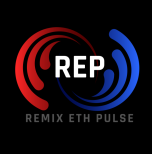Coinbase Monthly Outlook
Recent market conditions have shaken our confidence in the more optimistic outlook for Q1 2025 (a view presented in December 2024), as tightening liquidity and macroeconomic uncertainty have eroded investor sentiment. The current market consensus appears generally pessimistic, reflected in the cryptocurrency total market cap falling below pre-U.S. election levels and a sharp decline in perpetual contract funding rates. We do believe that the speed and magnitude of this market pullback have left many investors confused.
The current pessimistic market sentiment is primarily driven by concerns over the uncertain trajectory of economic activity, particularly after many investors in recent months have overly focused on the “American Exceptionalism 2.0” narrative. In terms of the cryptocurrency market, the momentum from special positive factors seems to have slowed, causing anxiety among many market players. However, we believe that the current pessimism is an important signal that the market may reach its bottom in the coming weeks, laying the foundation for new highs later this year.
Note: American Exceptionalism is one of the core ideologies that has run through American history, advocating that the U.S. has a uniqueness or even superiority in political systems, values, and developmental paths compared to other countries. This concept has shaped American national identity and profoundly influenced both domestic and foreign policies.
Global liquidity is beginning to recover, and the decline in real and nominal interest rates should eventually help lower borrowing costs. We also believe that long-term trends are likely to continue supporting global growth. That said, we think the cryptocurrency market will struggle to stage a meaningful rebound until traditional risk assets recover, so we are closely watching for any signs of capitulation in the U.S. stock market. Compared to survey data, the earnings season (April) may provide a more accurate picture of the true situation of U.S. consumers. We will continue to maintain an optimistic outlook for Q2 2025, but we recommend that investors remain neutral on risk assets at present.
When Will the Bottom Be Reached?
Despite the recent positive developments in the cryptocurrency space, such as the repeal of SAB 121 and the formal establishment of Bitcoin’s strategic reserves, the performance of the crypto market has remained weak since the beginning of the year. Furthermore, the SEC recently dropped multiple lawsuits against several crypto entities, including Coinbase, and the “Stablecoin Innovation and User Safety Act” may be submitted to the U.S. House and Senate for review in the summer of 2025.
Despite positive regulatory news, many market players are concerned that the catalyst effect unique to the crypto space is weakening. This has led macroeconomic factors to become the dominant force, with the correlation between the cryptocurrency market and U.S. stocks rising. Indeed, the recent trends in traditional risk assets and the crypto market have clearly shown that our previous optimistic expectations for Q1 2025 have been misjudged.

Concerns about a sharp slowdown or even recession in the U.S. economy have caused a dramatic shift in market sentiment, which answers the question we posed in our previous monthly outlook: would market participants consider the impact of tariffs to be inflationary or deflationary? Currently, expectations for the federal funds rate have shifted from pricing in just one rate cut in 2025 to three rate cuts.
This round of sell-offs has led to our Coinbase 50 (COIN50) index falling by 25.5% year-to-date, with the total market cap of the cryptocurrency space shrinking by $532 billion. Interestingly, aside from the media and entertainment sector, the various subsectors in the index have experienced similar levels of market volatility. DeFi, Memecoin, and infrastructure sectors all saw similar degrees of sharp pullbacks. This phenomenon highlights the broad risk-off sentiment in the market, with no selective consideration of the fundamentals and revenue-generating capabilities of different projects.

Overall, we believe this quarter may mark the low point for cryptocurrency asset prices in 2025, as structural positive factors such as tax cuts, regulatory easing, and other stimulus fiscal policies may materialize later this year. Currently, stablecoin balances have risen to $229 billion (data source: DeFiLlama), indicating that a large number of investors are hedging by shifting to stablecoins, pushing the market cap share of stablecoins to 8.5% of the total crypto market (up from 6.3% at the start of the year). Furthermore, we believe long-term trends such as artificial intelligence may soon deliver on their promise to enhance economic productivity.
Cognitive Bias
Additionally, we do not believe the recent weakness in cryptocurrency performance over the past few weeks represents an abnormal divergence from the current macro tightening conditions. Instead, the real divergence was observed between November 2024 (U.S. elections) and January 20, 2025 (presidential inauguration), when the performance gap between crypto assets and traditional risk assets became evident. Despite the tightening liquidity environment that began in the second half of 2024, the market prices, as represented by the COIN50 index, accumulated an over 67% increase during this period (see Chart 3).

If we focus on the total assets on the Federal Reserve’s balance sheet, excluding reverse repos and the Treasury General Account (TGA) balance, this can serve as a market liquidity indicator. This indicator has dropped from $6.2 trillion in early June 2024 to nearly $5.7 trillion at the start of 2025, a decline of over $500 billion (see Chart 4). Generally, an expansion of the Fed’s balance sheet injects liquidity into the market, while reverse repo operations help absorb excess liquidity in the banking system, and an increase in the TGA balance lowers the amount of available cash in the financial system.
Liquidity is the lifeblood of any market, as it fosters greater investor participation, leverages effects, and enhances price discovery mechanisms, guiding savings funds to borrowers. Conversely, liquidity contraction tends to suppress trading activity and can lead to sharp price fluctuations. However, despite the continued decline in liquidity in the second half of 2024, the core factor driving significant volatility in cryptocurrency asset prices was the market’s expectation of a major shift in the U.S. regulatory environment—U.S. elections presented a key event with a relatively binary outcome for investors. We believe the recent sell-off in the crypto market largely reflects a return to the trend of lower liquidity prices.

In our view, this could be a potential positive development. Over the past two months, the balance of the U.S. Treasury General Account (TGA) has dropped from $745 billion at the end of 2024 to $500 billion as of March 12, 2025. This reduction has led to a liquidity rebound above $6 trillion. Moreover, current bank reserve levels are close to 10-11% of GDP, widely considered sufficient to maintain financial stability, suggesting that the Fed may decide to pause or end quantitative tightening as early as the Federal Open Market Committee (FOMC) meeting scheduled for March 18-19.
All these signs suggest that market liquidity may be returning. The U.S. 10-year Treasury yield is likely to continue to decline, as U.S. Treasury Secretary Yellen has made it clear that the current administration is committed to reducing long-term interest rates. We believe that his policy determination should not be questioned. From the perspective of the Fed’s model, a decline in yields will enhance the present value of future cash flows for risk assets such as stocks, which may also drive up cryptocurrency asset prices.
Summary
The cryptocurrency market is currently facing significant challenges due to increased volatility and macroeconomic uncertainty. However, we still believe that accelerated regulation and increased institutional participation will bring a more optimistic outlook for the coming months. Additionally, with liquidity shifting from a six-month tightening phase to a loosening phase, the speed at which cryptocurrency asset prices bottom may be faster than most market participants expect. Therefore, we maintain a constructive stance on the crypto market for Q2 2025. That said, short-term positive catalysts remain limited, and a cautious approach is advised at this stage.
Article cooperation reprinted from: PANews

